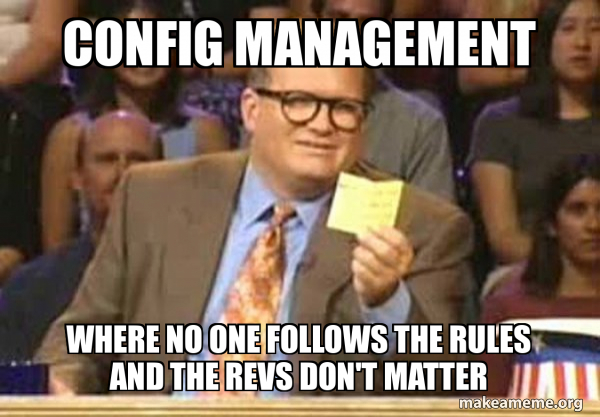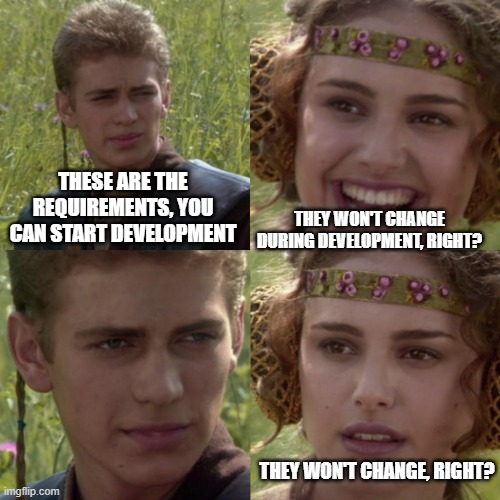Debugging Through Life
18 Dec 2024Introduction
Starting my journey in Software Engineering was like stepping onto a roller coaster—exhilarating, intimidating, and a bit overwhelming all at once. From day one, I knew this was going to be a challenging ride, especially when I saw the grade distribution for the course and heard whispers from peers about the difficulty level. Balancing this course with my other commitments felt like a test of my time management skills. However, I also knew that the knowledge I would gain—specifically in Configuration Management, Coding Standards, and Agile Project Management—would not only equip me for the course but would serve as essential tools for my future career in tech. The lessons I learned have reshaped how I approach both individual coding tasks and team collaborations, and they will remain invaluable as I continue my journey in software development.
A Solid Foundation

When I first encountered the concept of Configuration Management, I was skeptical. It sounded like just another buzzword, something that only came into play when things went wrong. However, as I dove deeper into the course and started using tools like Visual Studio Code and Git, I quickly realized that this wasn’t just an optional practice—it was a cornerstone of effective development.
Think of configuration management as the blueprint for building a house. If the foundation isn’t solid and consistent, the structure could fall apart at any moment. The same goes for software: ensuring consistency across environments prevents a host of problems like incompatibility or unexpected errors. By using version control systems like Git and GitHub, I learned how to manage code changes systematically, track versions, and collaborate more efficiently. These tools helped me organize my work, manage dependencies, and avoid nasty surprises. As I grew more familiar with managing versions and using the terminal for updates and checks, the significance of configuration management became crystal clear. It wasn’t just about keeping things in order—it was about creating a streamlined, reliable workflow that ensures the software I develop is robust and scalable.
Polish Code till it Shines

One of the most eye-opening lessons I encountered was the importance of Coding Standards. In the beginning, I was primarily focused on making my code functional—if it worked, I thought that was enough. But I quickly learned that writing functional code is only part of the equation. The real magic happens when you write code that is not only functional but also clean, readable, and maintainable. This is where coding standards come into play.
At first, I struggled with small, seemingly insignificant issues like inconsistent indentation or missing comments, which were flagged by ESLint. It was frustrating, but over time, I began to see these mistakes as opportunities for growth rather than obstacles. As I learned to follow conventions—such as using clear variable names, proper indentation, and adding meaningful comments—I realized that these small adjustments made a big difference. Not only did it improve my own understanding of the code, but it also made it easier for others (and future me) to dive into and contribute to the project.
Coding standards create a level of consistency that improves collaboration. In group projects, when everyone adheres to the same standards, the codebase becomes more predictable and easier to navigate, reducing the time spent on misunderstandings and bug fixing. The takeaway here is that clean, well-organized code doesn’t just run smoothly—it enables faster development, clearer communication, and better long-term results. It’s about creating a solid foundation for collaboration and ensuring your code is scalable and easy to manage over time.
Flexibility Over Rigidity

Before I took this course, I always assumed software development followed a rigid, step-by-step process. You design, then code, and finally test—simple, right? But the introduction of Agile Project Management completely shattered that myth. Agile is all about flexibility, collaboration, and iterative improvement—qualities I hadn’t fully appreciated until I applied them in real projects.
In the context of team-based assignments, Agile encouraged us to break down large, daunting tasks into smaller, more manageable chunks. This made the overall process feel less overwhelming, and as we delivered updates in iterations, we were able to refine our approach based on feedback. I quickly learned that instead of a “one-and-done” approach, software development is an ongoing process of feedback, adaptation, and continuous improvement. The beauty of Agile lies in its iterative nature—it allows for constant course correction and encourages open communication among all team members.
In practice, working in Agile forced me to shift my mindset. I became more comfortable with the idea that failure isn’t final. Rather, it’s an opportunity to pivot, learn, and improve. Agile’s emphasis on communication, collaboration, and constant iteration made it easier for us as a team to adapt quickly, stay aligned, and ultimately build better software. The takeaway? Whether you’re working solo or in a team, flexibility is key to navigating the fast-paced world of software development.
Conclusion
Reflecting on my experience in this Software Engineering course, I can confidently say that it was one of the most challenging yet rewarding experiences of my academic journey. The skills I gained in Configuration Management, Coding Standards, and Agile Project Management have not only helped me survive the course but have given me valuable tools to tackle future software development challenges with confidence.
Configuration management taught me the importance of consistency across different environments, ensuring my code remains organized and reliable. Coding standards instilled in me the discipline of writing clean, maintainable code that benefits both individual developers and teams. And Agile—oh, Agile—taught me the power of flexibility, collaboration, and constant improvement. Each of these principles has reshaped how I approach coding and working in teams, and I know they will be invaluable in my career moving forward.
This course was far from easy, but it provided the foundation I need to continue growing as a developer. I now feel more equipped to take on future projects, whether on my own or in collaboration with others. The road ahead in software engineering is long, but with the tools I’ve gained from this course, I’m excited to take the next step in my development journey.